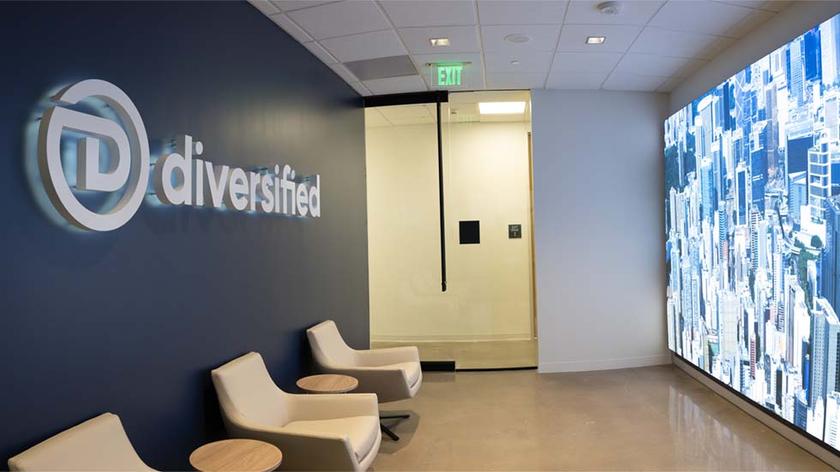Nutmeg Audio Post
In upgrading our existing capabilities, we wanted Nutmeg Audio Post to be a studio where the clients do not have to worry about their finishing format. We also wanted to accommodate the increasing demand for 5.1 mixing, from commercials through long-form programming.
The basics
To accomplish these goals, we switched from Doremi Labs' V1 hard disk video recorders to Avid Mojo SDI for tighter video integration with Digidesign Pro Tools|HD 2 Accel systems. The Mojo SDI allows us to equip each of our nine studios with nonlinear video for use during the mixing sessions, improving the workflow for session preparation. This changeover liberates a total of 16RU across both of our machine rooms, which is plenty for our Sony SRW-5500 and Panasonic AJ-HD3700B multiformat recorders.
To address the 5.1 mixing needs, we moved from Yamaha's O2R to the company's DM1000 console. We wanted to equip the studios with a device that had a calibrated monitoring level control so that at a glance, the engineer could determine the control room monitoring level. It also offers access to downmixing and bass management with as few operations as possible.
The challenges
One of the greatest challenges was meeting the expectation that clients want to view their content in HD while in the studio. Anyone can take the composite downconverted output and route it to an NTSC display. But clients finishing in HD expect to view their content in HD. To accomplish this, we upgraded our displays to Panasonic TH-50PH9UK 50in and Pioneer PDP-6070HD 60in plasmas.
Three studios are designed so the mixer has a video display in addition to the plasma mounted overhead for the clients. In these studios, there is a Panasonic BT-LH1700W LCD display. All of the Panasonic displays have SDI inputs. The Pioneers have AJA HD10C2 SDI-to-component converters.
By looking at the back panel of our multiformat recorders, it is clear that the HD-SDI output must be used to view the program in HD. The choice to have SDI signal paths to all of the displays allows us to provide the best-quality video in SD while meeting HD viewing requirements.
The DM1000, in addition to being a fine surround console, has had a positive effect upon our studio designs. The unit includes HUI emulation, so it is no longer necessary to have a control surface and a console in the studio. At the press of a button, 16 faders within the Pro Tools session are accessible. The ability to remove a dedicated control surface streamlines the number of objects on the desk at the mixer's position and on rolling stands near the sweet spot.
Choice decisions
The decision to purchase the SRW-5500 (with downconversion and Digital Betacam playback options) and AJ-HD3700B was driven by our clients needs. With that as the starting point, other decisions were made with both flexibility and client assurance in mind. The displays were chosen for their picture quality and their screen sizes for the existing viewing distances.
The displays were calibrated by an ISF certified calibrator. This allows our clients to view the picture in the mixing suite and be confident that it looks exactly as it should.
The bass management functions of the DM1000 allow us to monitor how the 5.1 mix will sound in a home environment. This provides the mixers with reassurance that their efforts are heard as intended, while giving clients realistic expectations.
New needs
In the machine room, the move to HD created the need to be able to measure the HD video signal in addition to SD. To achieve this, we replaced our Tektronix 1720 and 1730 with a WFM7000 multiformat waveform monitor. We added a Harris Leitch Panacea Lite switcher for maintaining a digital video signal path from playback to monitoring. To maintain synchronization between all of the equipment in the machine room, we installed an Ensemble Designs Avenue signal integration system. The Avenue serves as our master sync generator and can generate video references for NTSC and PAL, as well as HD tri-level sync references.
We have finished projects on HDCAM SR for MHD and on HDCAM for New Harbor Entertainment. The New Harbor Entertainment program “She's Moving In” required a 5.1 mix. Since HDCAM only allows for four audio channels, this required us to use Dolby E, which we can also offer to any other client finishing on HDCAM. Some projects we've finished on D-5HD include a spot for the Dodge Nitro through BBDO, Miller Lite through Crispin, Porter + Bogusky, and American Express through Ogilvy.
Jonathan S. Abrams is chief technical engineer for Nutmeg Audio Post.
Get the TV Tech Newsletter
The professional video industry's #1 source for news, trends and product and tech information. Sign up below.













